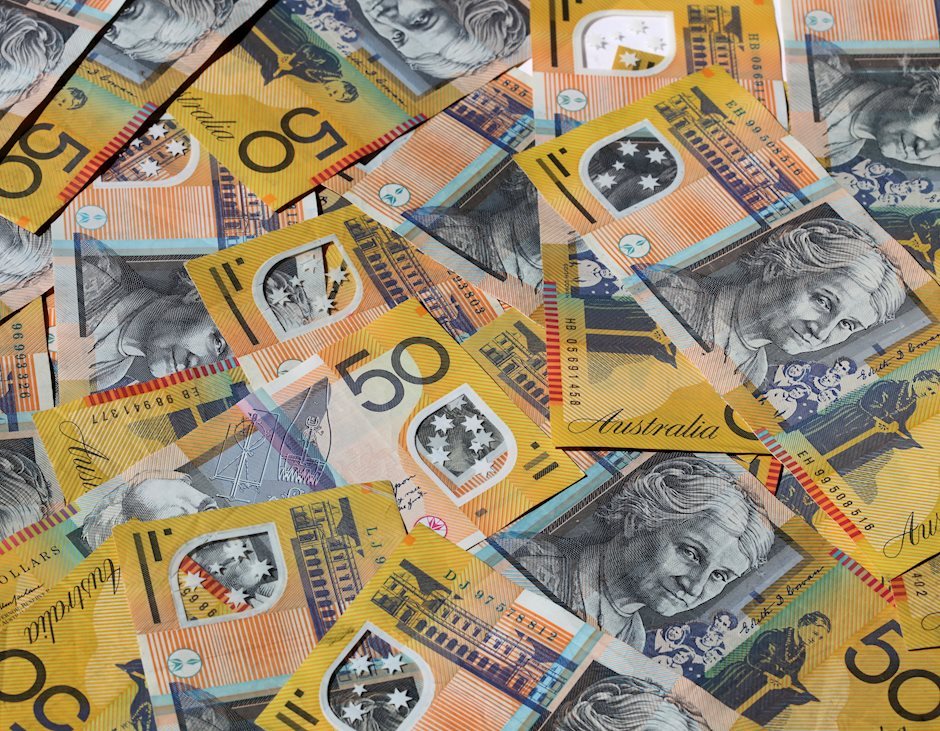AUD/USD posts modest gains above 0.6450 despite stronger US Dollar, eyes on RBA Meeting Minutes
- AUD/USD trades with mild gains near 0.6460 in Monday’s early Asian session.
- Fed Chair Powell downplayed the need for aggressive rate cuts, citing economic strength.
- The hawkish RBA might cap the downside for the pair.

The AUD/USD pair trades on a stronger note around 0.6460 during the early Asian session on Monday. However, the upside for the pair might be limited amid the cautious remarks from the Federal Reserve (Fed) officials and strong US economic data, which boost the US Dollar (USD) broadly.
The US Retail Sales increased slightly more than expected in October, according to the Commerce Department's Census Bureau on Friday. Retail sales rose 0.4% in October versus 0.8% prior (revised from 0.4%), above the market consensus of 0.3%.
Traders reduced their expectations for a Fed rate reduction in December. Fed Chair Jerome Powell said last week that "the economy is not sending any signals that we need to be in a hurry to lower rates.” According to the CME FedWatch Tool, the markets have priced in nearly 60% of the 25 basis points (bps) rate cut by the Fed at the December meeting.
On the Aussie front, the hawkish comments from Reserve Bank of Australia (RBA) Governor Michele Bullock could provide some support for the Australian Dollar (AUD). The RBA reiterated that “the Board is not ruling anything in or out” and that there is “the need to remain vigilant to upside risks to inflation.” Investors will keep an eye on the RBA minutes, which will be released on Tuesday.
Australian Dollar FAQs
One of the most significant factors for the Australian Dollar (AUD) is the level of interest rates set by the Reserve Bank of Australia (RBA). Because Australia is a resource-rich country another key driver is the price of its biggest export, Iron Ore. The health of the Chinese economy, its largest trading partner, is a factor, as well as inflation in Australia, its growth rate and Trade Balance. Market sentiment – whether investors are taking on more risky assets (risk-on) or seeking safe-havens (risk-off) – is also a factor, with risk-on positive for AUD.
The Reserve Bank of Australia (RBA) influences the Australian Dollar (AUD) by setting the level of interest rates that Australian banks can lend to each other. This influences the level of interest rates in the economy as a whole. The main goal of the RBA is to maintain a stable inflation rate of 2-3% by adjusting interest rates up or down. Relatively high interest rates compared to other major central banks support the AUD, and the opposite for relatively low. The RBA can also use quantitative easing and tightening to influence credit conditions, with the former AUD-negative and the latter AUD-positive.
China is Australia’s largest trading partner so the health of the Chinese economy is a major influence on the value of the Australian Dollar (AUD). When the Chinese economy is doing well it purchases more raw materials, goods and services from Australia, lifting demand for the AUD, and pushing up its value. The opposite is the case when the Chinese economy is not growing as fast as expected. Positive or negative surprises in Chinese growth data, therefore, often have a direct impact on the Australian Dollar and its pairs.
Iron Ore is Australia’s largest export, accounting for $118 billion a year according to data from 2021, with China as its primary destination. The price of Iron Ore, therefore, can be a driver of the Australian Dollar. Generally, if the price of Iron Ore rises, AUD also goes up, as aggregate demand for the currency increases. The opposite is the case if the price of Iron Ore falls. Higher Iron Ore prices also tend to result in a greater likelihood of a positive Trade Balance for Australia, which is also positive of the AUD.
The Trade Balance, which is the difference between what a country earns from its exports versus what it pays for its imports, is another factor that can influence the value of the Australian Dollar. If Australia produces highly sought after exports, then its currency will gain in value purely from the surplus demand created from foreign buyers seeking to purchase its exports versus what it spends to purchase imports. Therefore, a positive net Trade Balance strengthens the AUD, with the opposite effect if the Trade Balance is negative.
Author

Lallalit Srijandorn
FXStreet
Lallalit Srijandorn is a Parisian at heart. She has lived in France since 2019 and now becomes a digital entrepreneur based in Paris and Bangkok.
















